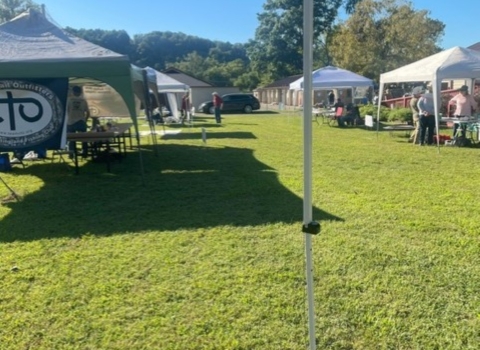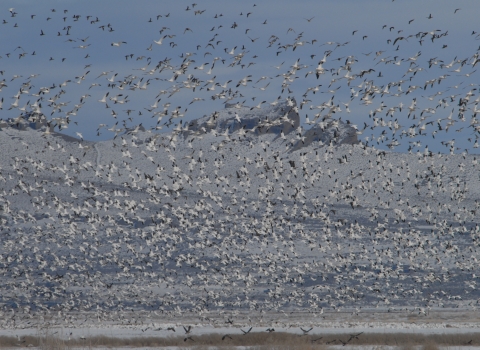Conservation success stories from the people of the U.S. Fish and Wildlife Service who work to protect fish, wildlife, plants, and natural habitats of the central and Southern California coast.
Despite these trying times, the Ventura FWO mission holds fast: to conserve and recover rare fish, wildlife, and plant communities across the Southern and Central California coast from our beautiful coastal dune and sagebrush sagebrush
The western United States’ sagebrush country encompasses over 175 million acres of public and private lands. The sagebrush landscape provides many benefits to our rural economies and communities, and it serves as crucial habitat for a diversity of wildlife, including the iconic greater sage-grouse and over 350 other species.
Learn more about sagebrush ecosystems to the rugged terrain of our chaparral and oak woodlands and forests. Buoyed by the Endangered Species Act, one of the nation’s foremost wildlife conservation laws, we worked with partners this year to find innovative strategies to protect ecosystems that benefit society as a whole.
In response to the devastating effects of extreme drought due to climate change climate change
Climate change includes both global warming driven by human-induced emissions of greenhouse gases and the resulting large-scale shifts in weather patterns. Though there have been previous periods of climatic change, since the mid-20th century humans have had an unprecedented impact on Earth's climate system and caused change on a global scale.
Learn more about climate change , we collaborated across four western U.S. states and Mexico to develop a rangewide management strategy to guide efforts to enhance and restore habitat for California’s only native freshwater turtle, the western pond turtle. We announced a blueprint to guide recovery efforts for the Nipomo mesa lupine and La Graciosa thistle, two endangered plant species that live only in the Guadalupe Nipomo Dunes and nowhere else on Earth. Joining nationwide efforts to help Monarch butterflies, we worked with local partners to restore important overwintering and pollinator habitats and educate our communities about their role in monarch conservation. We worked alongside renewable energy companies to reduce the carbon footprint while strategizing methods to minimize and mitigate impacts to threatened and endangered plants and wildlife. We worked with the academic community to successfully breed and reintroduce Santa Cruz long-toed salamanders to help bolster populations and increase genetic diversity - a key component to their recovery in the wild. We welcomed our first Kendra Chan Conservation Fellow to honor the life of former wildlife biologist Kendra Chan and carry on a legacy that champions diversity in conservation as an all-hands-on-deck effort. Our leadership team began a dialogue surrounding racial injustices, recognizing the important work that lies ahead to foster an inclusive environment that celebrates diversity of thought, culture, and contribution.
This is only a snapshot of the important work carried out by our team in 2021. I am amazed by the resiliency of our staff and the progress we’ve made toward our mission amid surmounting natural resource challenges.
As we moved into the second year of the worldwide COVID-19 pandemic, the Ventura FWO adapted to serve the American public as a virtual workplace, using new technologies to connect and communicate with conservation partners and our communities, while prioritizing the health and safety of our staff. As we look to the future, we remain nimble to support our workforce and the American public we serve.
-Stephen P. Henry, Field Supervisor
Watch the video
2021 Year in Review video (audio described)
Read the magazine


